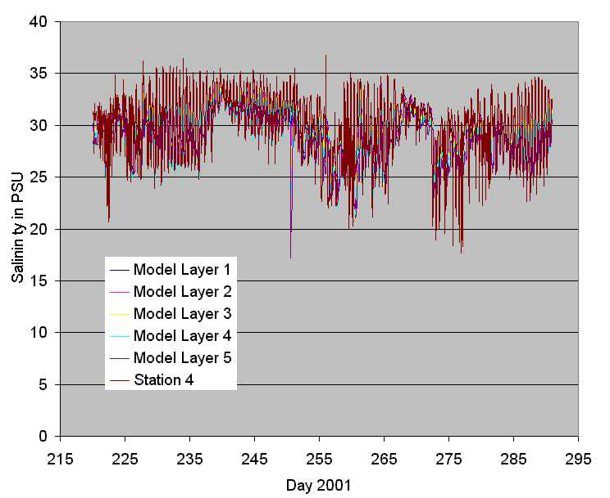Salinity Distribution and Flow Management Studies for Lake Worth Lagoon, Florida
The Environmental Fluid Dynamics Code (EFDC) was applied to Lake Worth Lagoon for three-dimensional predictions of the salinity regime. Four monitoring stations collected salinity and water level data from key locations at the boundaries of Lake Worth Lagoon. Two stations were situated within the interior of Lake Worth Lagoon where continuous salinity and current velocity data were collected for calibrating the EFDC Model. Additional model inputs were provided from meteorological data collected from a local weather station maintained by the National Buoy Data Center.
Freshwater inflows to the model were provided by gauged data collected from the control structures. The model calibration process consisted of adjustments to the mean elevations of water level time series at the model boundaries and local and regional adjustments of roughness height at the benthos boundary. Other calibration procedures included local adjustments to wind stress coefficients, quality control of measured data, and adjustments of local water depths. Statistical measures were used to quantify and verify the calibration. The calibrated model was applied to quantify the impacts on salinity regime of existing and future variable controlled freshwater flows from canal discharge, rainfall, runoff, and groundwater inflows.
Client:
-
South Florida Water Management District
Project Duration:
- 2002
Team Members:
- Dr. Gary Zarillo
Services Provided:
- EFDC Modeling
- Model Calibration
- 3-D Salinity Regime Predictions

